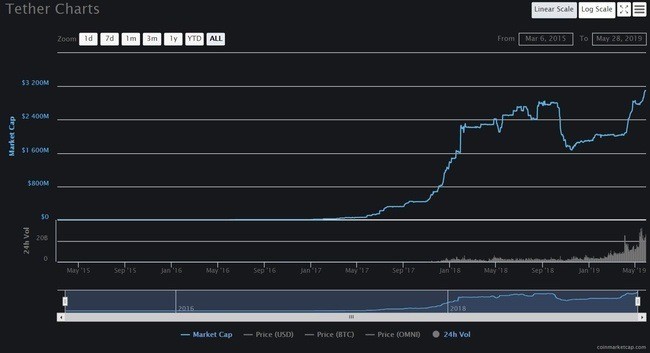Whether you buy Bitcoin for daily trades, to use as a currency, or for long term investing, one thing is certain: eventually, you’re going to want to cash out. But as anyone who became an overnight Bitcoin Millionaire in the crypto rush of 2017 knows, cashing out isn’t always so simple. It’s much easier to buy Bitcoin than to sell Bitcoin (though Coinmama is changing that), especially if you’re looking to sell in large quantities. Add to that the fact that “cryptocurrency” and “stability” are probably the last words you’d pair together, and suddenly timing is of the essence. Bitcoin is famous for its volatility, routinely moving more in a day than traditional stocks do in a month. And altcoins—cryptocurrencies other than Bitcoin, such as Ethereum, Litecoin, and Cardano—are an even wilder ride, generally increasing in volatility the further down the crypto market cap rankings one looks. 200% daily moves are not uncommon for low-value coins at the bottom of the listings.
Volatility is great for traders, whose game is to make money on upwards and downwards price moves. However, volatility isn’t so great for anyone trying to use crypto as money. As with fiat hyperinflation, it’s hard to set prices or make economic plans when the value of money itself is in significant flux. So if you buy Bitcoin, how do you make sure you protect your assets? One answer is stablecoins.
What are Stablecoins?
With the volatility of cryptocurrency, the term “stablecoin” might seem paradoxical. Yet stablecoins are exactly that. They’re a cryptocurrency designed for one major purpose; to maintain a steady price. Given that volatility is one of the most frequently-cited drawbacks of cryptocurrency, it was inevitable that the attempt would be made to create a stable cryptocurrency, one whose price is tied to a pre-existing “real world” asset.
The successful ones, of which there are several, largely manage to maintain price parity with fiat currencies; primarily the US Dollar, although many other options, including coins with equivalence to EUR, GBP, and CNY, are also available. And monetary metals such as gold are also popular. Certain “algorithmic” stablecoins, such as BitUSD on Bitshares’ blockchain or MakerDAO on Dai’s blockchain, have their price maintained by a smart contract which attempts to balance their value through automated trading and issuance.
Why are Stablecoins needed?
For those who view cryptocurrency primarily as a speculative or investment vehicle, the utility of a stablecoin may not be obvious. After all, if your goal is profit, why would you want to buy a coin designed to never go up in value?
In practice, traders are the biggest users of stablecoins. Not only are they extremely useful for transferring funds between exchanges with none of the high fees and long delays typical when moving money internationally via bank wires, but stablecoins, at least in theory, also offer a reliable store of value.
Let’s return for a minute to the great crypto rush of 2017. Bitcoin buyers who had bought their cryptocurrency in Bitcoin’s early years, often for as low as $0.10, were suddenly sitting on millions—or even billions—of dollars. Even someone who had bought one Bitcoin for $1000 saw their investment increase by 2000% in December 2017. Yet at the peak of the market, people were struggling to cash out. At the time, while it was fairly easy to buy Bitcoin, it was much harder to sell it for fiat. Even crypto brokers or vendors such as Coinmama, which now gives users the ability to sell Bitcoin, place limits on the dollar amount you can sell. And with the aforementioned volatility, a $20,000 Bitcoin could turn into a $13,000 Bitcoin in the span of a week.
Stablecoins allow traders and investors to “cash out” to a currency with a steady value, without leaving the crypto ecosystem. While trading crypto to fiat sees both financial and regulatory limitations, transferring crypto to crypto avoids that. For someone looking to cash out a large amount while the price is high, stablecoins provide a storage space of sorts, allowing the user to then transfer to fiat in smaller amounts at their own leisure, without worrying about the value of their coin changing. In other words, it’s almost like locking the market rate. For high volume traders, stablecoins keeps their funds agile, able to be transferred rapidly between exchanges, and (depending on relevant local laws) also avoids any obvious crypto to fiat “taxable event,” with its associated income or capital gains tax. For regular traders, this can greatly simplify their tax reporting and save them a fortune in taxes.
The drawbacks of Stablecoins
Unfortunately, the “stability” aspect comes at the cost of near-total centralization. Like any price-controlled asset, a controller of some kind is required. Most stablecoins are inescapably and intimately tied to the traditional banking system. As such, they’re subject to failure, seizure, fractional reserve fraud, and many other ills which Bitcoin was designed to avoid. Thus, while stablecoins usually display price stability, their ultimate stability—and continued existence—is questionable, as it rests upon the good graces of banks and regulators.
Furthermore, it’s expected that as the value of Bitcoin and other major cryptos rises, they will eventually become as stable as regular currencies. This is likely to lend greater utility to crypto in for use as every day currency. While Bitcoin has proven to be an excellent investment over time, many users are reluctant to spend it due to its tendency to appreciate in value. Conversely, many merchants are unwilling to accept Bitcoin due to the ever-present risk of a sudden crash in its value.
While the value of all fiat currencies is continuously eroding due to inflation, this process is usually gradual and predictable, allowing for economic planning. Crypto is unlikely to fully replace fiat money for regular transactions until it becomes at least as stable as fiat. While it’s true that merchants may avoid volatility risks by instantly and automatically converting any crypto received to fiat, this nonetheless keeps them firmly within the traditional monetary system and all its attendant drawbacks.
Stablecoins may seem like the perfect solution to volatility problems, however, in practice they’re hardly used for anything other than holding or transferring value on or between exchanges. As it’s already so easy for merchants to accept fiat (via credit card, bank transfer, PayPal, etc.) it makes little sense to accept fiat-pegged stablecoins which must then be converted, at a time and monetary cost, back into fiat, which must then be withdrawn to the merchant’s account. In other words, stablecoins have not only found their niche in crypto trading, but as cryptocurrency volatility decreases, so will the need for stablecoins.
That said, over the past two months, the price of Bitcoin has more than doubled, and has seen spikes and drops of $1000 in as little as a day. If this pattern continues and Bitcoin keeps going up, the current market volatility makes stablecoins necessary. They may eventually be phased out, but for now they’re unavoidable.
Major Stablecoins
Fiat stablecoins tend to be associated with large crypto exchanges with well-established banking relationships. This is because both crypto and fiat expertise and capacities are necessary to operate a functional stablecoin. It is essential that for every crypto unit issued, an equivalent amount of fiat money is held in a bank account to provide backing for the asset. Should this backing be called into question for whatever reason, the market may re-evaluate the stablecoin’s price relative to its fiat trading pair, despite the best efforts of the exchange to defend the crypto-to-fiat value peg.



